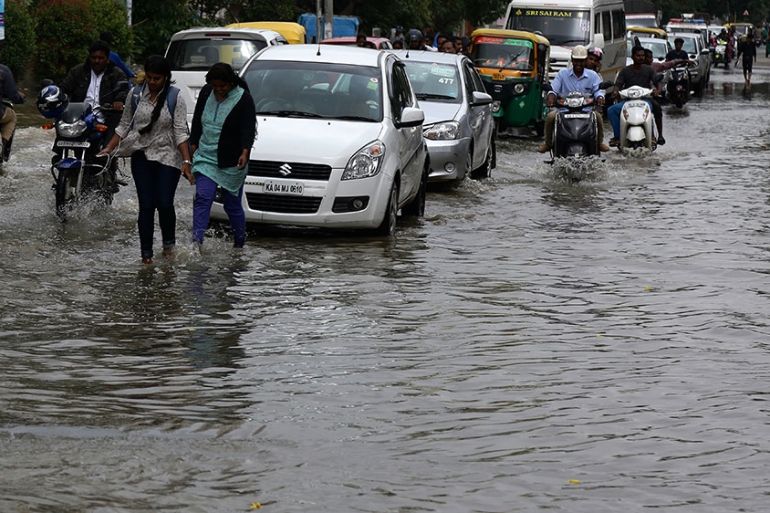India’s rainy season comes up short
Four-month long Southwest Monsoon 2017 comes to an end with below normal rainfall.

Rainfall in India’s annual monsoon season was below average and less than forecast.
Some crop-growing central and northern states received less rain than needed, the Indian Meteorological Department (IMD) said, as the rainy season officially came to an end.
Keep reading
list of 4 itemsNothing Grows Forever
Island states win historic climate case in world oceans court
‘Nothing left’: How climate change pushes Indigenous people from their land
Monsoon rains were 95 percent of the long-term average compared with the IMD’s forecast of 98 percent, marking the fourth consecutive year in which the national weather office has overestimated likely rainfall.
The monsoon, which delivers about 70 percent of India’s annual rainfall, is critical for the farming sector that accounts for about 15 percent of India’s economy and employs more than half of its 1.3 billion people.
India’s rainfall was below average mostly because of low rainfall in the oilseeds and pulses-growing central state of Madhya Pradesh, and in the rice-growing northern states of Haryana and Punjab.
While rice output is expected to decline by two percent from 2016 because of better irrigation in the rain deficient northern states, soybean output could fall about eight percent, the government said.
Conversely, as is always the case, there are places that have enjoyed an abundant amount of rain. Tamil Nadu recorded its highest monsoon rainfall since 1996.
The state recorded a 30 percent excess in rainfall this season, compared with last year’s 20 percent deficit during the same period.
IMD has adopted the so-called dynamic computer model, based on a US model tweaked for India, to improve the accuracy of its forecasts.
IMD’s forecast for the 2017 monsoons was its most accurate since 2008, when there was a difference of only one percentage point between the forecast and actual rainfall.